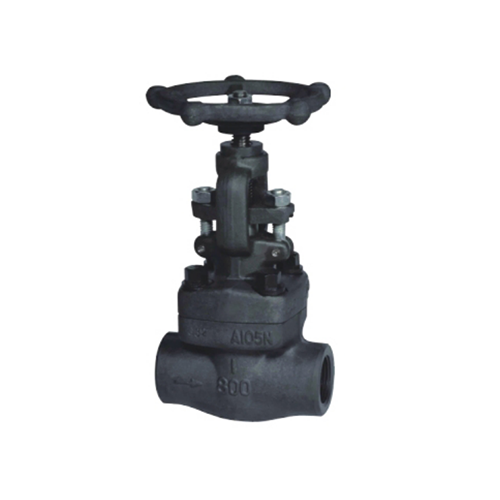
Butterfly Valve Maintenance Cost Optimization Tips
Introduction
Butterfly valves are widely used in various industries, including water treatment, oil and gas, chemical processing, and HVAC systems, due to their cost-effectiveness, compact design, and efficient flow control. However, like any mechanical component, butterfly valves require regular maintenance to ensure optimal performance and longevity. Poor maintenance can lead to leaks, operational inefficiencies, and costly repairs or replacements.
To minimize downtime and reduce maintenance costs, it is essential to implement a structured maintenance strategy. This guide provides comprehensive tips for optimizing butterfly valve maintenance costs while ensuring reliability and efficiency.
---
1. Preventive Maintenance: The Key to Cost Reduction
Preventive maintenance (PM) is the most effective way to reduce long-term costs associated with butterfly valves. By proactively inspecting and servicing valves before failures occur, companies can avoid unexpected shutdowns and expensive emergency repairs.
1.1 Scheduled Inspections
- Conduct routine visual inspections to check for leaks, corrosion, and wear.
- Verify proper alignment and seating of the disc to prevent uneven wear.
- Inspect seals and gaskets for degradation, as they are common failure points.
1.2 Lubrication
- Apply appropriate lubricants to the valve stem and bearings to reduce friction.
- Use manufacturer-recommended lubricants to avoid compatibility issues.
- Over-lubrication can attract contaminants, so apply sparingly.
1.3 Actuator Maintenance
- Check pneumatic, electric, or hydraulic actuators for smooth operation.
- Inspect linkages and connections for wear or misalignment.
- Test actuator response time to ensure quick and precise valve operation.
---
2. Condition-Based Monitoring
Instead of relying solely on fixed schedules, condition-based monitoring (CBM) uses real-time data to determine when maintenance is needed. This approach reduces unnecessary servicing and extends valve life.
2.1 Vibration Analysis
- Excessive vibration may indicate misalignment or bearing wear.
- Use sensors to monitor vibration levels and detect early signs of failure.
2.2 Leak Detection
- Ultrasonic leak detectors can identify internal or external leaks before they escalate.
- Pressure decay tests help assess seal integrity.
2.3 Thermal Imaging
- Infrared cameras can detect abnormal heat patterns caused by friction or poor seating.
---
3. Proper Installation Practices
Improper installation is a leading cause of premature valve failure. Ensuring correct installation reduces maintenance frequency and costs.
3.1 Alignment and Support
- Misaligned piping strains the valve, leading to premature wear.
- Use proper supports to prevent excessive stress on the valve body.
3.2 Flange Tightening
- Uneven bolt tightening can distort the valve seat, causing leaks.
- Follow a cross-tightening pattern to ensure uniform pressure.
3.3 Avoiding Contaminants
- Install strainers upstream to prevent debris from damaging the valve disc.
- Ensure clean pipelines before commissioning.
---
4. Material Selection for Longevity
Choosing the right materials for butterfly valves based on the application can significantly reduce maintenance costs.
4.1 Body Materials
- Cast Iron: Cost-effective but prone to corrosion in harsh environments.
- Stainless Steel: More durable and corrosion-resistant, ideal for aggressive media.
- PVC/CPVC: Lightweight and corrosion-resistant but limited to low-pressure applications.
4.2 Seat and Seal Materials
- EPDM (Ethylene Propylene Diene Monomer): Excellent for water and mild chemicals.
- PTFE (Polytetrafluoroethylene): Highly chemical-resistant but less flexible.
- Buna-N (Nitrile Rubber): Good for oil and fuel applications.
4.3 Disc Materials
- Stainless steel discs are common, but coated or lined discs may be needed for corrosive fluids.
---
5. Training and Documentation
Well-trained personnel can identify and address issues before they escalate, reducing repair costs.
5.1 Operator Training
- Train staff on proper valve operation to avoid slamming or over-torquing.
- Educate maintenance teams on troubleshooting common issues.
5.2 Maintenance Logs
- Keep detailed records of inspections, repairs, and replacements.
- Track failure trends to improve future maintenance strategies.
---
6. Spare Parts Management
Having the right spare parts on hand reduces downtime, but excessive inventory increases costs.
6.1 Critical Spares
- Stock essential components like seals, gaskets, and bearings.
- Prioritize parts with high failure rates.
6.2 Vendor Relationships
- Establish reliable supplier agreements for quick procurement.
- Consider remanufactured or aftermarket parts for cost savings.
---
7. Predictive Maintenance Technologies
Advanced technologies can predict failures before they occur, optimizing maintenance schedules.
7.1 IoT and Smart Valves
- Smart valves with embedded sensors provide real-time performance data.
- Cloud-based analytics help predict failures and optimize maintenance.
7.2 AI-Driven Diagnostics
- Machine learning algorithms analyze historical data to forecast wear patterns.
- AI can recommend optimal maintenance intervals.
---
8. Cost-Effective Repair vs. Replacement
Sometimes, repairing a valve is more economical than replacing it.
8.1 When to Repair
- Minor seat or seal damage can often be repaired at a fraction of replacement costs.
- If the valve body is intact, refurbishing may be viable.
8.2 When to Replace
- Severe corrosion, cracks, or structural damage warrant replacement.
- Older valves with obsolete parts may be more expensive to maintain.
---
9. Environmental and Operational Considerations
External factors influence valve lifespan and maintenance costs.
9.1 Harsh Environments
- Marine or chemical exposure accelerates wear; choose corrosion-resistant materials.
- Protective coatings can extend valve life.
9.2 Operational Conditions
- High-cycle applications require more frequent inspections.
- Throttling services cause more wear than on/off applications.
---
10. Continuous Improvement
Regularly review maintenance strategies to identify cost-saving opportunities.
10.1 Failure Analysis
- Investigate root causes of recurring failures.
- Implement corrective actions to prevent future issues.
10.2 Benchmarking
- Compare maintenance costs with industry standards.
- Adopt best practices from similar applications.
---
Conclusion
Optimizing butterfly valve maintenance costs requires a balanced approach of preventive, predictive, and condition-based strategies. Proper installation, material selection, and staff training play crucial roles in reducing downtime and repair expenses. By leveraging smart technologies and continuous improvement, organizations can achieve long-term cost savings while maintaining reliable valve performance.
Implementing these best practices ensures that butterfly valves operate efficiently, minimizing unexpected failures and maximizing service life.
この Web サイトでは、お客様に最高のエクスペリエンスを提供するために Cookie を使用しています。
コメント
(0)